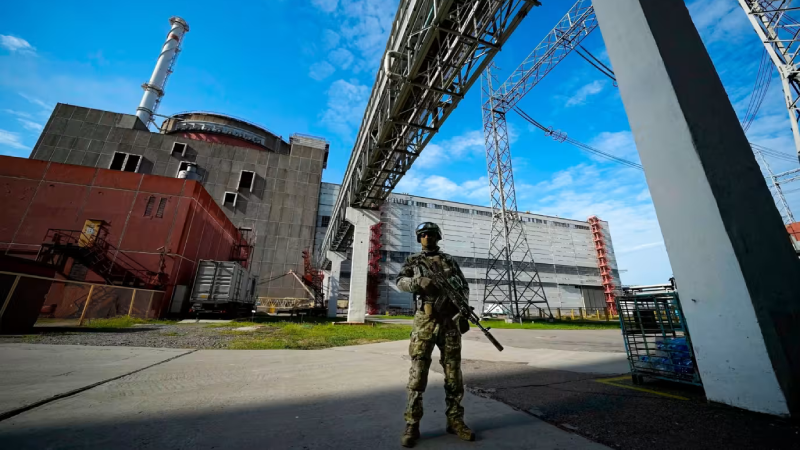
Chernobyl Roulette by Serhii Plokhy — an occupation story like no other
The gripping account of the Ukrainian plant workers who saved the world from another nuclear disaster
By Tim Judah, Fletcher alum and Special Correspondent for The Economist
In another time and place, Serhii Plokhy might have been described as a Stakhanovite, a term derived from a Soviet movement named after a coal miner who supposedly mined 14 times his quota in 1935. Plokhy teaches Ukrainian history at Harvard and Chernobyl Roulette is his third book since February 2022, when the Russians began their full-scale invasion of his country.
In the past few years, Plokhy has also written an excellent history of Ukraine, a history of Russian nationalism and one on the 1986 Chernobyl nuclear disaster. Clearly no one else was better placed to tell the tale of the 35 days of the Russian occupation of Chernobyl than him and, given the risk of a new catastrophe caused by the fighting, this is an occupation story like no other.
When the Russian forces rumbled in, they threatened the some 300 staff, firefighters and national guardsmen present with a “meat grinder” unless they surrendered. Should the staff resist and risk serious damage to the plant, or continue to work and risk being tarred as collaborators? Given their almost unique situation they surrendered and, says Plokhy approvingly, “The choices they made helped to save the world from another Chernobyl disaster.”
Although journalists covered this story, it is the details that Plokhy recounts, including how the Ukrainian staff at the plant turned the tables on the Russians, that are extraordinary. On arrival, two Russian officers met Valentyn Heiko, the shift foreman, and were made to understand that “if they were to survive” they needed to follow his instructions and let his team continue its work unmolested. From “feeling that they were in control” they “now felt trapped, hostages in the place they had allegedly conquered”.
The Russians used the area as one for rest and resupply. Meanwhile, the Ukrainian team played up fears of a disaster at the decommissioned plant. Their work included monitoring for radiation and operating the giant sarcophagus over the destroyed reactor. When Russian President Vladimir Putin put his strategic forces on high alert, raising the prospect of deploying nuclear weapons, Heiko threatened the Russians, telling them that he would initiate another disaster. “I promise you that you will slowly and certainly die here together with me.”
A third of the Russians at the plant were classed as “obsessed” by one Chernobyl worker. They believed Putin’s propaganda about freeing Ukrainians from the nationalist radicals. Hunts were conducted for mythical American or Ukrainian nuclear, biological or chemical warfare laboratories. Among the rest were those who asked the Ukrainians what they were doing there, and asked to watch Ukrainian TV news because they had no idea of what was going on. Some dug trenches in the contaminated Red Forest area, prompting widespread satisfaction in Ukraine that this meant they would die of radiation poisoning. Plokhy is doubtful, though — the radiation levels were probably not high enough to do real harm, says a bioscientist. But, notes Plokhy, one lesson of the 1986 disaster was that the impact of exposure to even low levels can manifest itself decades later.
Plokhy has written a great book, but he could not have done it so fast by himself. The core of it is built around a series of interviews mostly conducted by Oleksiy Radynski of The Reckoning Project, an organisation set up to gather testimonies of war crimes. Plokhy duly acknowledges this, but it might be easy to miss the extent to which this work is a co-production. It is also only a first draft of history. A full history will only be possible when the Russians who participated in the occupation can talk and the archives in Moscow are opened.
The book’s conclusion is that this story is “a warning for the future”. There are 440 nuclear reactors on the planet, and Plokhy says that “If the world is to survive, it must make warfare against nuclear sites as much a taboo as the use of nuclear weapons became after Hiroshima and Nagasaki.” Ukraine’s Zaporizhzhia nuclear plant, also seized at the beginning of the full-scale invasion, remains under occupation; and in the past few weeks the Russians have raised the alarm, claiming that the Ukrainians intend to attack their Kursk nuclear plant. This is where Russian troops rehearsed their capture of Chernobyl.
Chernobyl Roulette: A War Story by Serhii Plokhy Allen Lane £25, 240 pages
(This post is republished from Financial Times.)
